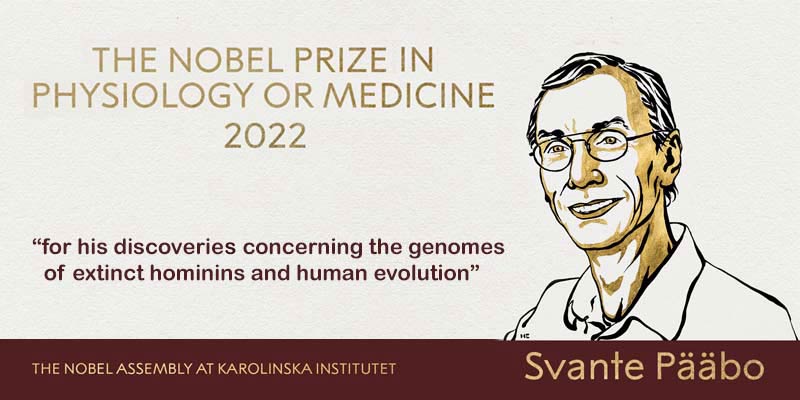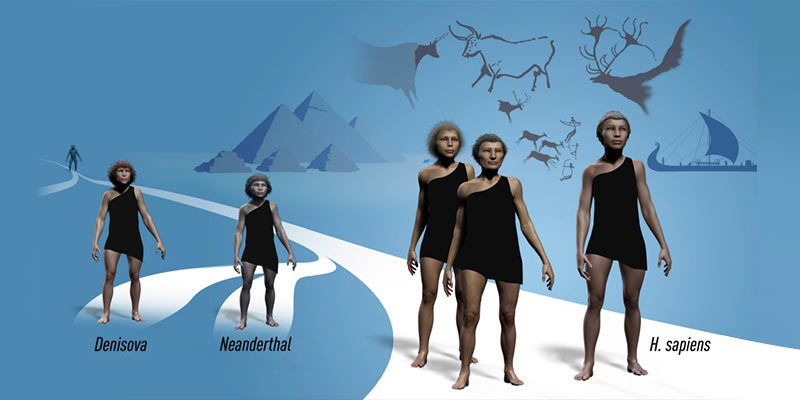- World
- Oct 03
Swedish scientist Svante Paabo wins Nobel Prize in Physiology
Swedish scientist Svante Paabo won the 2022 Nobel Prize in Physiology or Medicine for discoveries concerning the genomes of extinct hominins and human evolution.
The Prize is awarded by the Nobel Assembly of Sweden’s Karolinska Institute and is worth 10 million Swedish crowns ($900,357).
Last year’s medicine recipients were David Julius and Ardem Patapoutian for their discoveries into how the human body perceives temperature and touch.
Sequencing the genome of the Neanderthal
• Through his pioneering research, Svante Paabo accomplished something seemingly impossible: sequencing the genome of the Neanderthal, an extinct relative of present-day humans. He also made the sensational discovery of a previously unknown hominin — Denisova.
• Importantly, Paabo also found that gene transfer had occurred from these now extinct hominins to Homo sapiens following the migration out of Africa around 70,000 years ago. This ancient flow of genes to present-day humans has physiological relevance today, for example affecting how our immune system reacts to infections.
• Paabo’s seminal research gave rise to an entirely new scientific discipline; paleogenomics. By revealing genetic differences that distinguish all living humans from extinct hominins, his discoveries provide the basis for exploring what makes us uniquely human.
Studies of relationship between present-day humans and Neanderthals
• Humanity has always been intrigued by its origins. Paleontology and archeology are important for studies of human evolution. Research provided evidence that the anatomically modern human, Homo sapiens, first appeared in Africa approximately 300,000 years ago, while our closest known relatives, Neanderthals, developed outside Africa and populated Europe and Western Asia from around 400,000 years until 30,000 years ago, at which point they went extinct.
• About 70,000 years ago, groups of Homo sapiens migrated from Africa to the Middle East and, from there they spread to the rest of the world. Homo sapiens and Neanderthals thus coexisted in large parts of Eurasia for tens of thousands of years.
• But scientists were searching to know about our relationship with the extinct Neanderthals. By the end of the 1990s, almost the entire human genome had been sequenced. This was a considerable accomplishment, which allowed subsequent studies of the genetic relationship between different human populations. However, studies of the relationship between present-day humans and the extinct Neanderthals would require the sequencing of genomic DNA recovered from archaic specimens.
• Homo sapiens is characterised by its unique capacity to create complex cultures, advanced innovations and figurative art, as well as by the ability to cross open water and spread to all parts of our planet. Neanderthals also lived in groups and had big brains. They also utilised tools, but these developed very little during hundreds of thousands of years. The genetic differences between Homo sapiens and our closest extinct relatives were unknown until they were identified through Paabo’s seminal work.
How he did it?
• As a postdoctoral student with Allan Wilson, a pioneer in the field of evolutionary biology, Paabo started to develop methods to study DNA from Neanderthals, an endeavor that lasted several decades.
• In 1990, Paabo was recruited to University of Munich, where, as a newly appointed Professor, he continued his work on archaic DNA. He decided to analyze DNA from Neanderthal mitochondria – organelles in cells that contain their own DNA.
• The mitochondrial genome is small and contains only a fraction of the genetic information in the cell, but it is present in thousands of copies, increasing the chance of success. With his refined methods, Paabo managed to sequence a region of mitochondrial DNA from a 40,000-year-old piece of bone.
• Thus, for the first time, we had access to a sequence from an extinct relative. Comparisons with contemporary humans and chimpanzees demonstrated that Neanderthals were genetically distinct.
• Paabo engaged several critical collaborators with expertise on population genetics and advanced sequence analyses. His efforts were successful. Paabo accomplished the seemingly impossible and could publish the first Neanderthal genome sequence in 2010. Comparative analyses demonstrated that the most recent common ancestor of Neanderthals and Homo sapiens lived around 800,000 years ago.
• Comparative analyses showed that DNA sequences from Neanderthals were more similar to sequences from contemporary humans originating from Europe or Asia than to contemporary humans originating from Africa. This means that Neanderthals and Homo sapiens interbred during their millennia of coexistence. In modern day humans with European or Asian descent, approximately 1-4 per cent of the genome originates from the Neanderthals.
Discovery of previously unknown hominin Denisova
• In 2008, a 40,000-year-old fragment from a finger bone was discovered in the Denisova cave in the southern part of Siberia. The bone contained exceptionally well-preserved DNA, which Paabo’s team sequenced. The results caused a sensation: the DNA sequence was unique when compared to all known sequences from Neanderthals and present-day humans.
• Paabo had discovered a previously unknown hominin, which was given the name Denisova. Comparisons with sequences from contemporary humans from different parts of the world showed that gene flow had also occurred between Denisova and Homo sapiens.
• This relationship was first seen in populations in Melanesia and other parts of South East Asia, where individuals carry up to 6 per cent Denisova DNA.
• Paabo’s discoveries generated a new understanding of our evolutionary history.
• Through his groundbreaking research, Svante Paabo established an entirely new scientific discipline, paleogenomics. Following the initial discoveries, his group has completed analyses of several additional genome sequences from extinct hominins. Paabo’s discoveries have established a unique resource, which is utilised extensively by the scientific community to better understand human evolution and migration.
Manorama Yearbook app is now available on Google Play Store and iOS App Store


